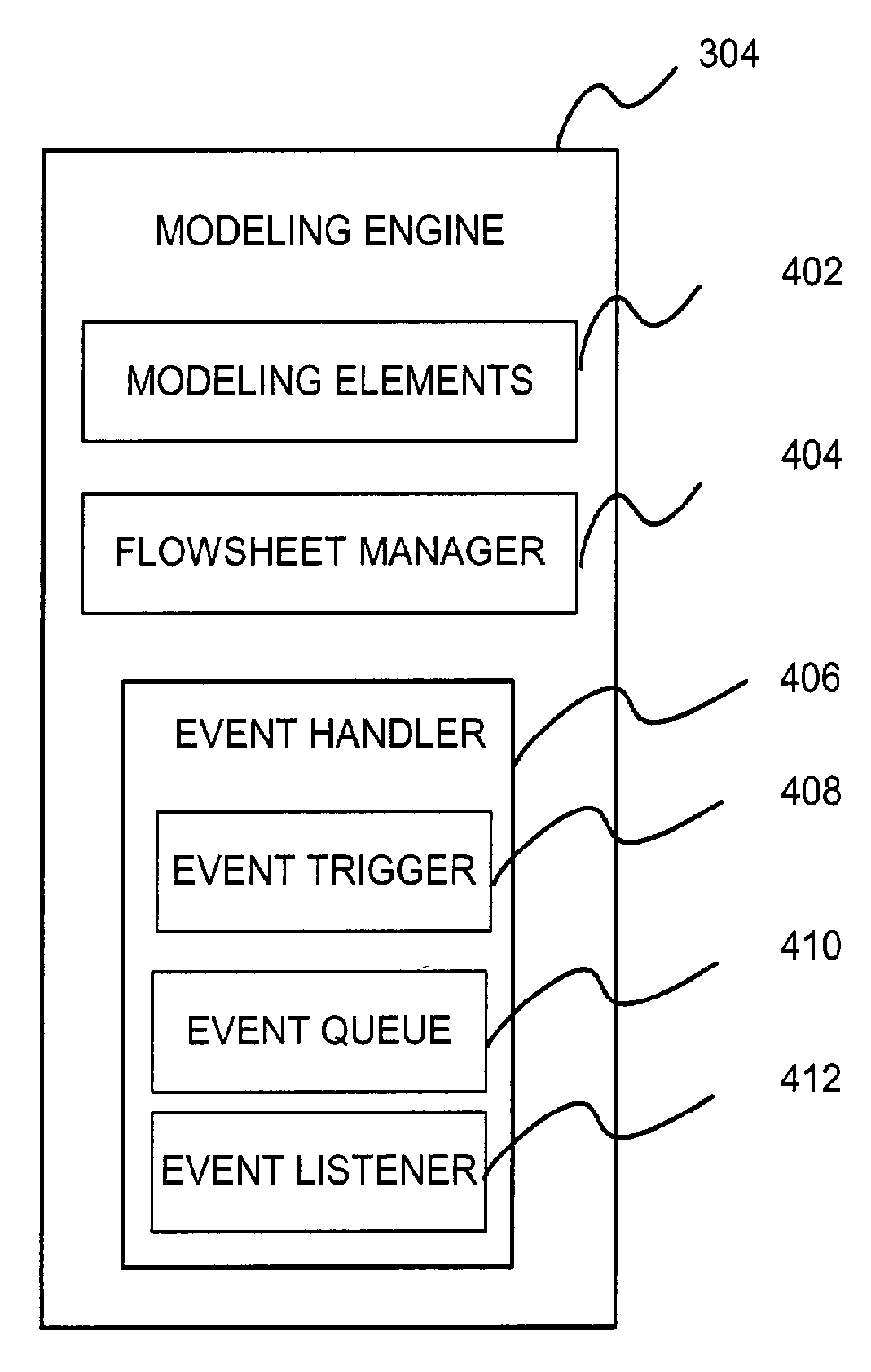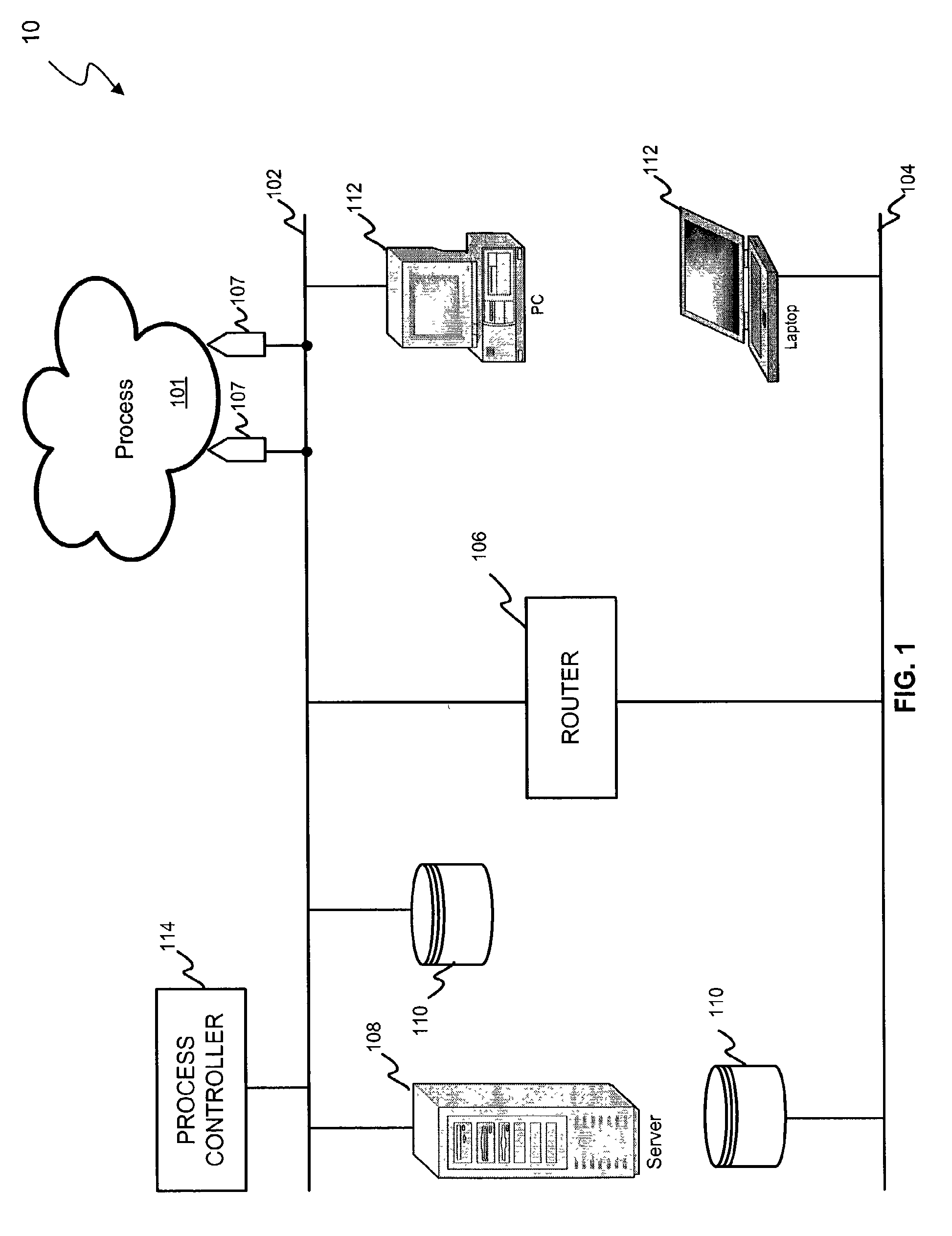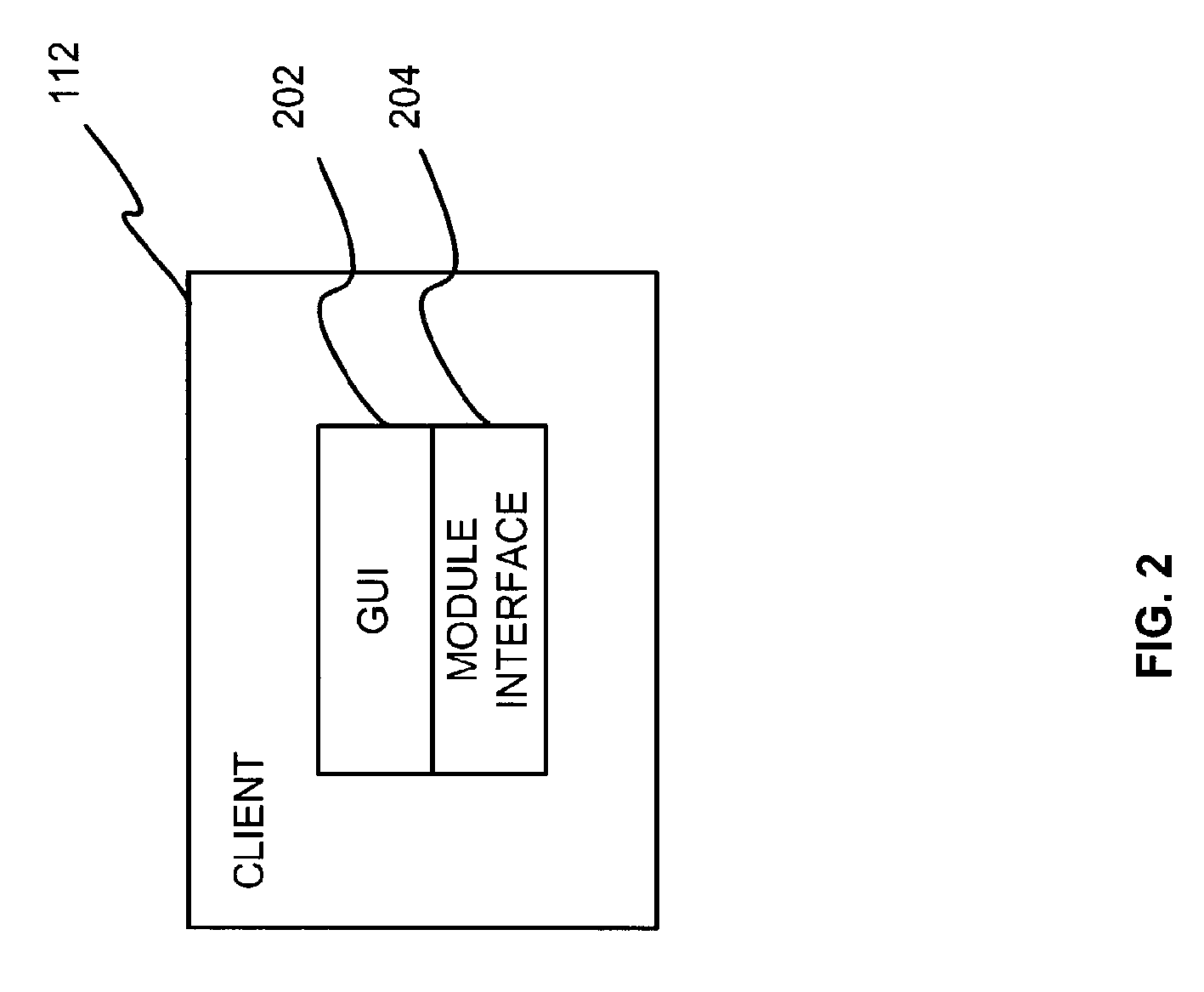Equipment condition and performance monitoring using comprehensive process model based upon mass and energy conservation
a technology of mass and energy conservation and process model, applied in the direction of instrumentation, programme control, total factory control, etc., can solve the problems of undesirable erroneous prediction or process control adjustment, degraded performance of flow sensors, and general inability to take into account the relative accuracy of sensors used in deriving error terms
- Summary
- Abstract
- Description
- Claims
- Application Information
AI Technical Summary
Benefits of technology
Problems solved by technology
Method used
Image
Examples
Embodiment Construction
[0023]FIG. 1 illustratively represents the network architecture of a system 100 within which one embodiment of the present invention may be incorporated. The system operates on a process 101, which may comprise any process including, without limitation, chemical processes, energy processes and distribution processes. In the case of a process 101 geared toward power generation, the math model will preferably reflect the Rankine cycle of the power generation operation. In implementations involving chemical and other processes, the material in the process can be treated as a fluid that is moved within the process in streams. A process is normally made up of more than one unit of equipment, where each unit carries out some specific processing function, such as reaction, distillation, or heat exchange. Equipment units are interconnected and / or in fluid communication via streams. A plurality of plant sensors 107 are selected and configured to measure values of the regulatory variables app...
PUM
 Login to View More
Login to View More Abstract
Description
Claims
Application Information
 Login to View More
Login to View More - R&D
- Intellectual Property
- Life Sciences
- Materials
- Tech Scout
- Unparalleled Data Quality
- Higher Quality Content
- 60% Fewer Hallucinations
Browse by: Latest US Patents, China's latest patents, Technical Efficacy Thesaurus, Application Domain, Technology Topic, Popular Technical Reports.
© 2025 PatSnap. All rights reserved.Legal|Privacy policy|Modern Slavery Act Transparency Statement|Sitemap|About US| Contact US: help@patsnap.com



